On Sunday, Liverpool travelled to South Wales to take on Cardiff City. The Reds had just completed the elimination of Porto in the Champions League quarter-finals and were on a nine-match unbeaten streak, having last lost a match back in January to Wolverhampton in the FA Cup. Cardiff meanwhile were in the midst of a fight to avoid relegation as they had recently defeated Brighton, the club currently three points ahead of them in the table and who have a game in hand.
Lineups
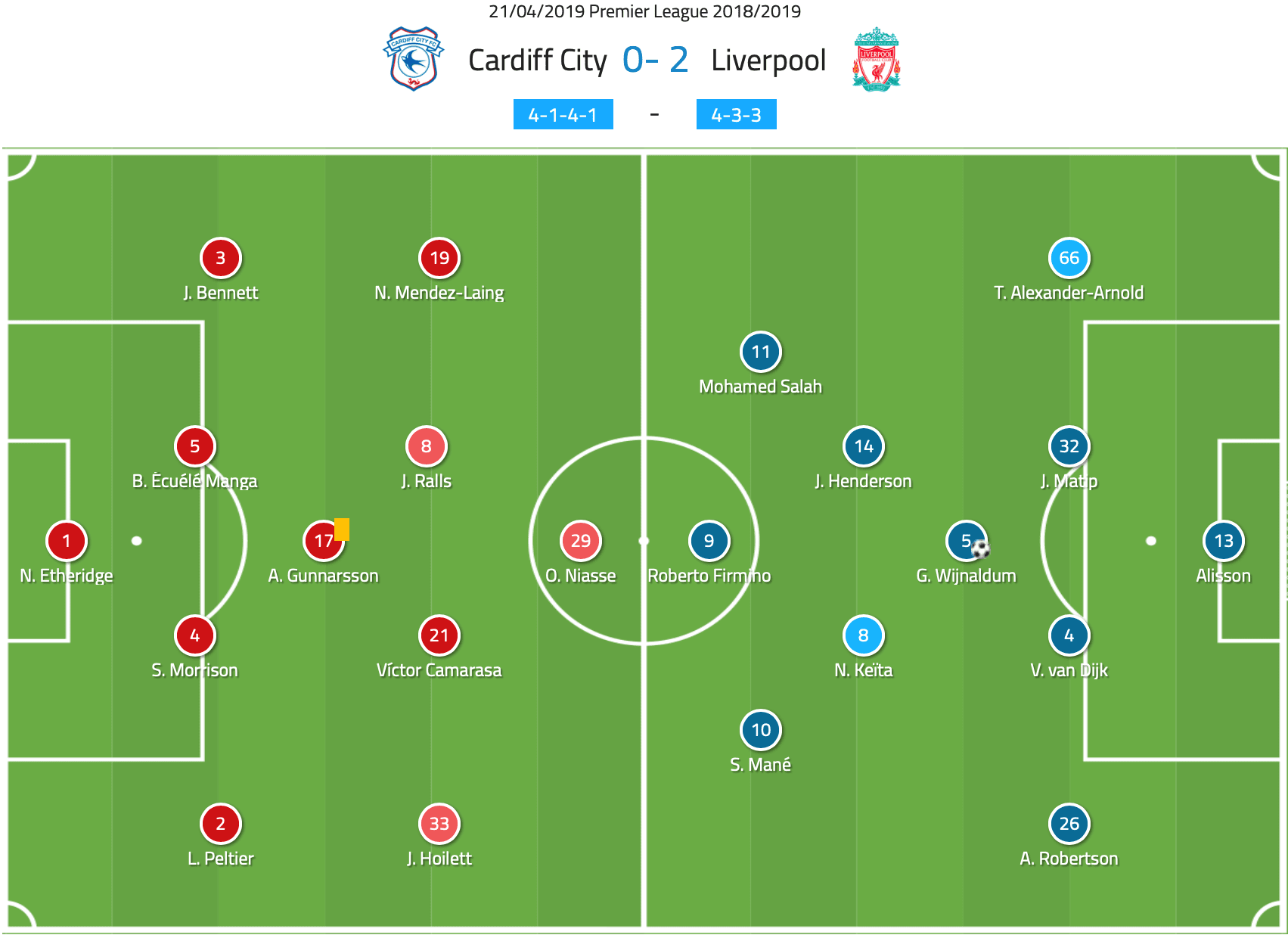
Cardiff lined up in a 4-1-4-1 formation, something they have commonly used against superior, more direct attacking opposition this season. On the back of Liverpool’s midweek victory in Portugal, Jürgen Klopp only opted to rest Fabinho and James Milner, with Jordan Henderson and Naby Keïta replacing them in the midfield of the trademark 4-3-3.
Creative progression
As expected, Liverpool controlled possession for a vast majority of the match. With the ball comfortably in Cardiff’s half of the pitch, we would often see Liverpool’s midfield or forwards drop back into space to aid in the composed progression of attacks.
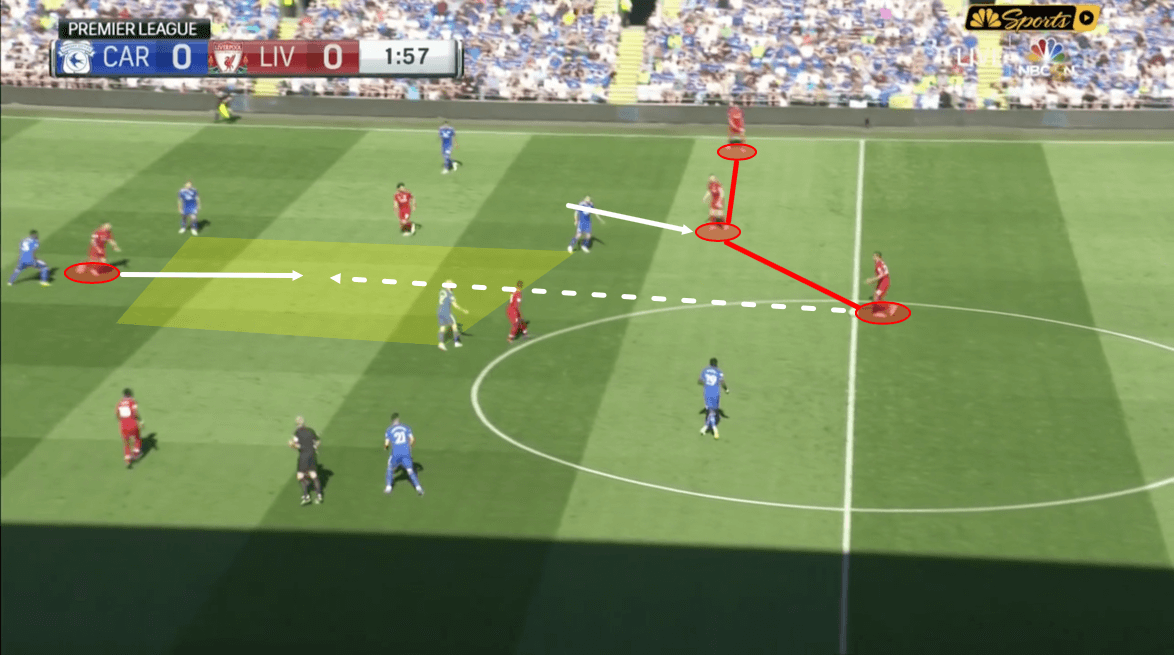
Liverpool’s backline and midfield were effective and creative in setting up attacks. Matip in particular had a confident if not exceptional match in possession, often carrying the ball forward to disrupt Cardiff’s defensive structure.
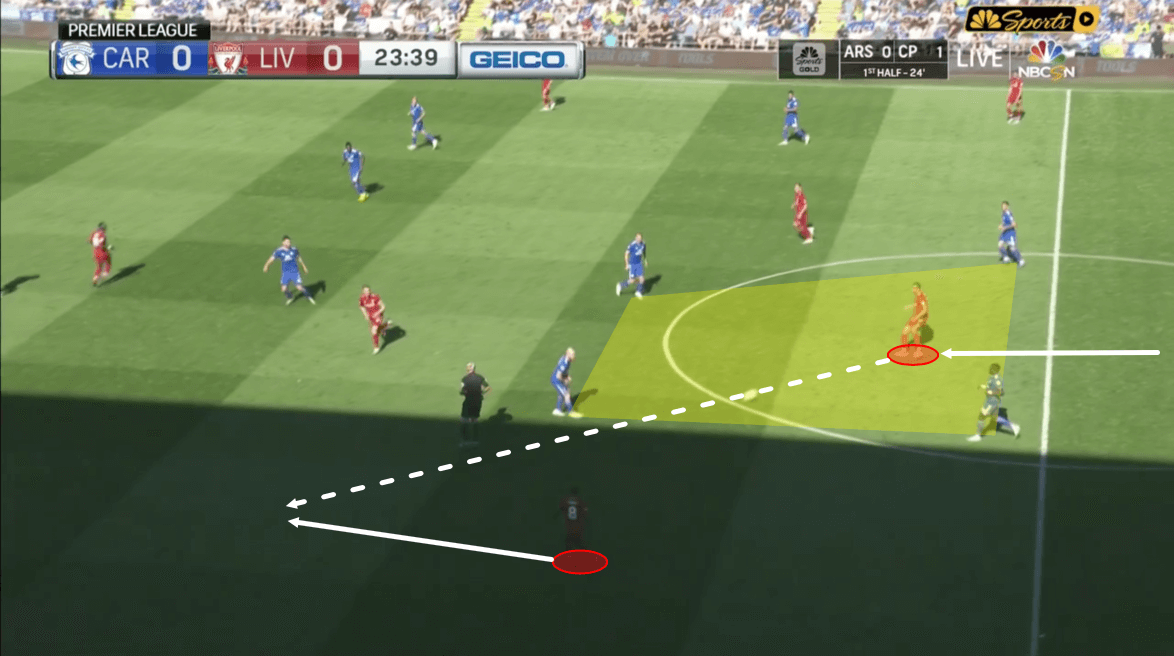
One of either Henderson, Keïta (above), or Georginio Wijnaldum was almost always positioned back in the half-spaces or alongside the outside of the centre-backs to aid in distribution and attacking build-up. One of either Firmino or Sadio Mané often followed their drop back.
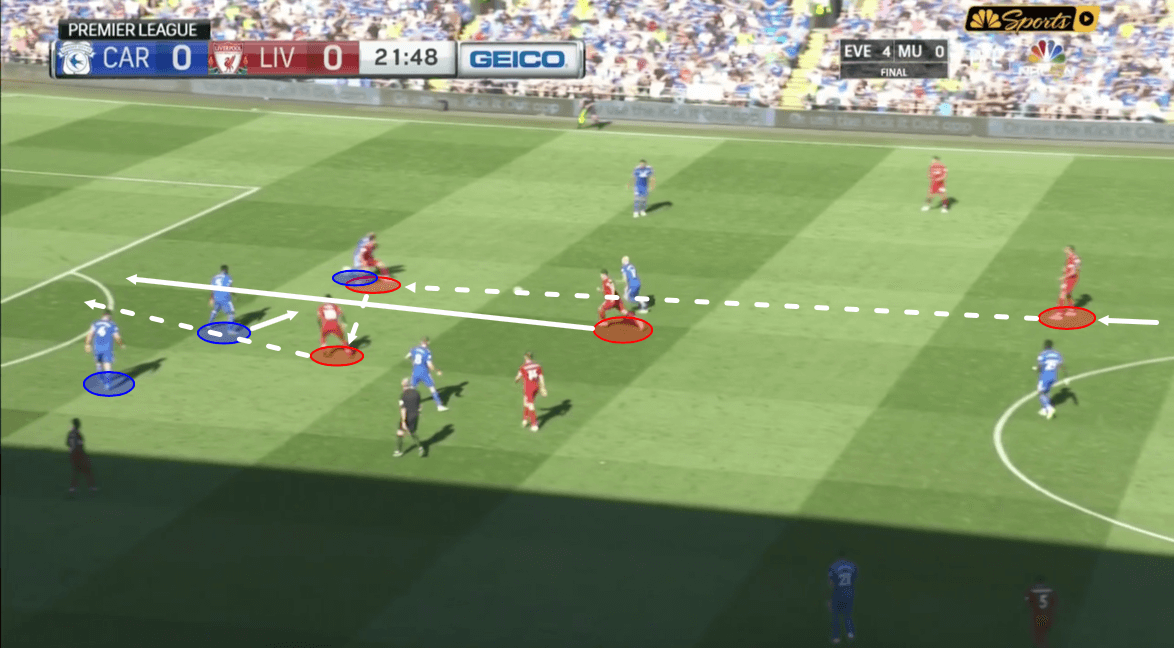
Liverpool found a deficiency in clinical finishing. Their 2.89xG backs up the three big chances missed this match. There have been previous matches this season in which the front three have struggled to put their stamps on the scoresheet due to poor final touches, but failing to do so against opponents who will have far fewer chances to score has proven manageable.
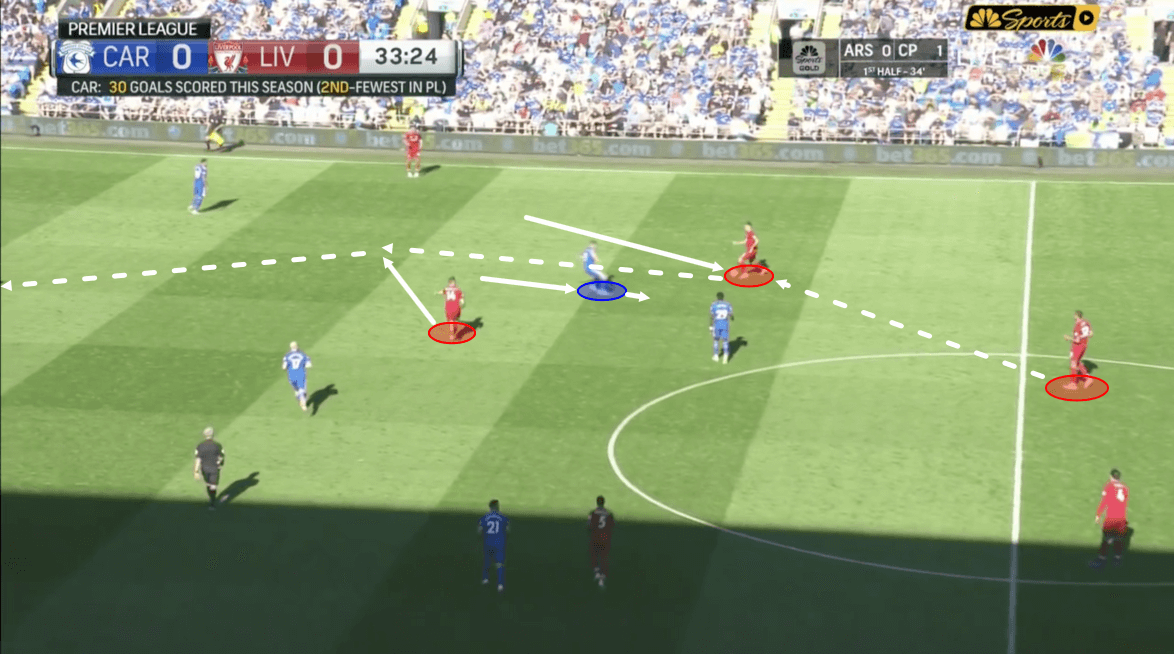
Cardiff defending and transitions
Though Liverpool’s finishing didn’t meet standards for much of the match, Cardiff’s defence wasn’t the simplest to take advantage of. Often in a low block, the home side seemed content with giving Liverpool pockets of space in front of the block as long as it prevented them from breaking through into the box.
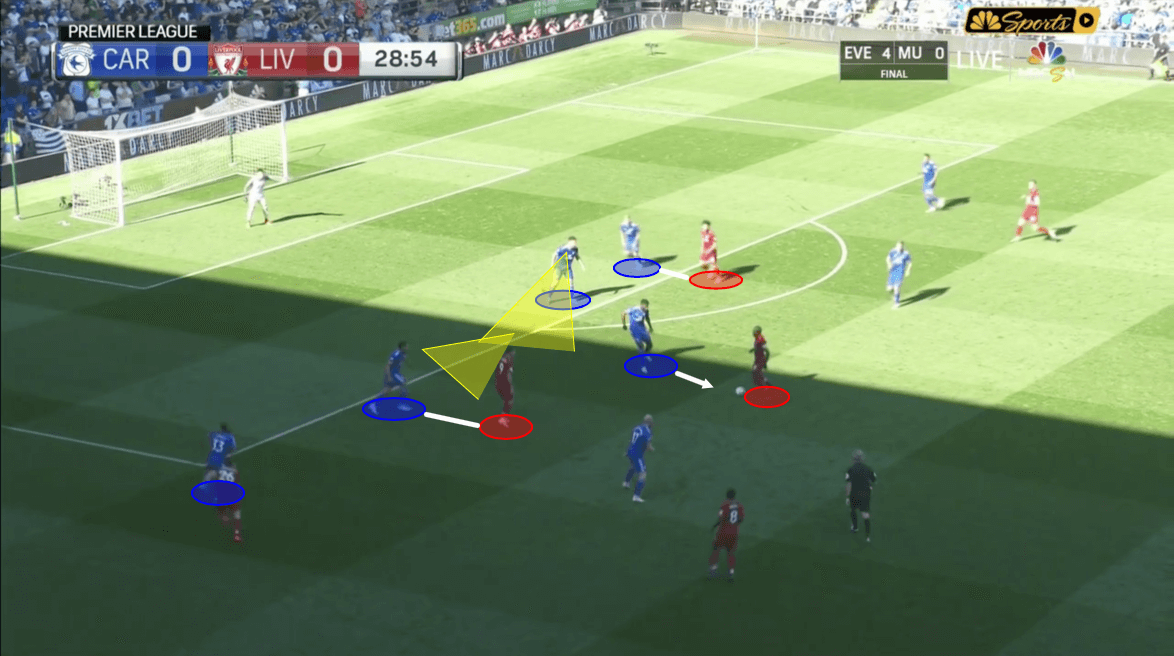
However, this defend-first style of play limited Cardiff’s opportunities to possess the ball, as they only had a mere 352 touches of the ball compared to Liverpool’s 798.
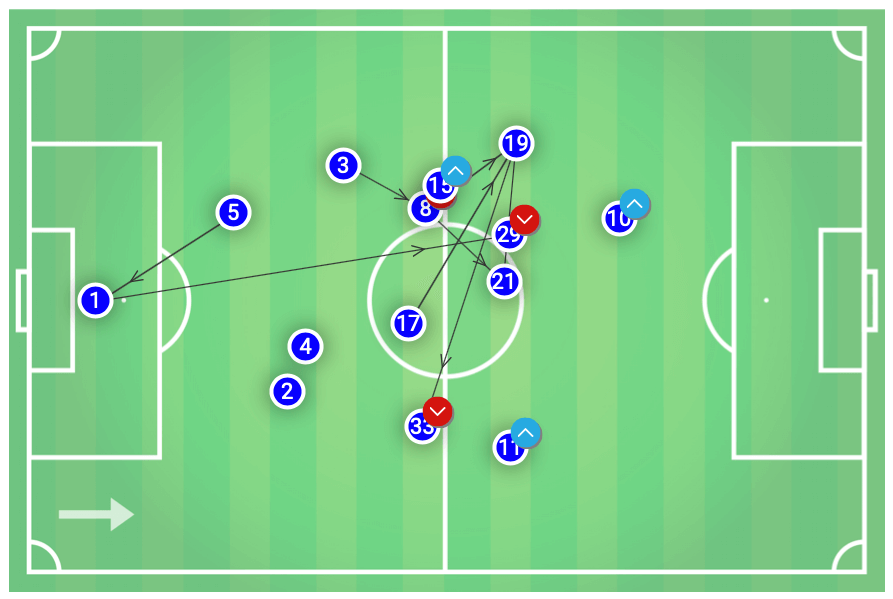
Cardiff only attempted 193 passes, while Liverpool made 619.When Cardiff did gain possession of the ball, they engaged in the tactic commonly used against superior opposition: long balls forward past the opponent’s backline to unleash their forwards on counter-attacks.
Though Liverpool’s midfield and defensive pressing were often very good at negating this strategy, there were a few times when this was deemed successful for Cardiff. Oumar Niasse and Nathaniel Mendez-Laing often found space to run into down the left side of the pitch.
Matip’s forward play might have been a partial cause of this, though as previously stated Henderson was good at positioning himself at the back and aiding in defense. Nevertheless, the two Cardiff attackers were able to beat Alexander-Arnold into Liverpool’s defensive third on a few occasions.
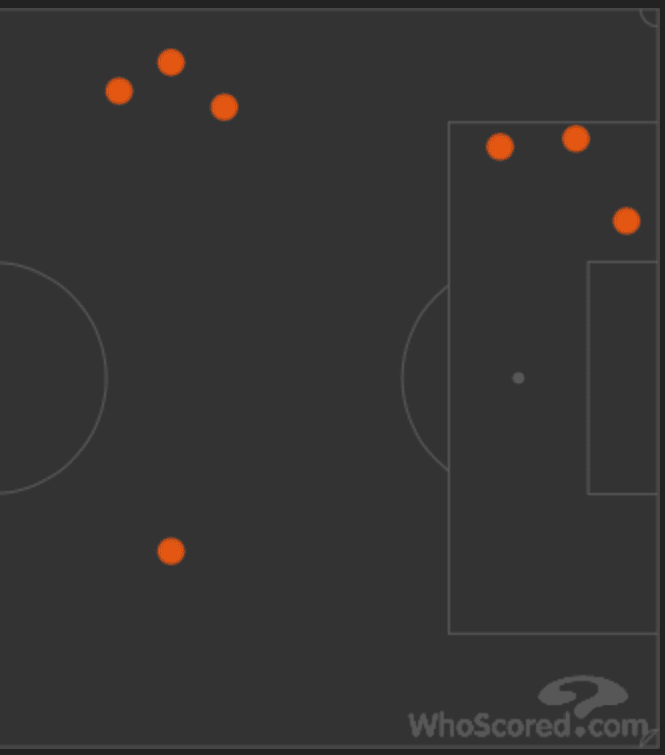
Liverpool were able to parry these rare attacks however, thanks to the defensive prowess and awareness of Alisson, Virgil van Dijk, and the midfield, including Keïta who tallied four successful tackles. Keïta covered all areas of the pitch as has been the norm for him lately, and his form has improved because of it.
Persistence
The seemingly inevitable eventually occurred when Liverpool broke the deadlock 10 minutes into the second half. The persistent attacks led to a total of 10 corner kicks in the match for Liverpool, a valuable tool the away side have mastered this season.
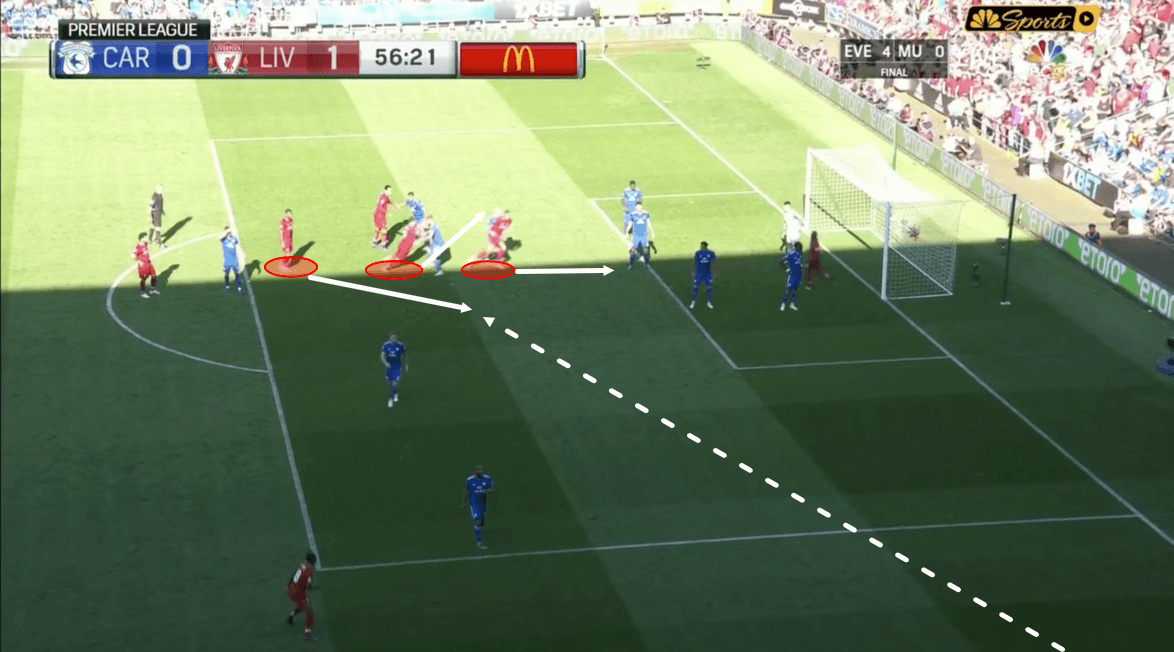
Liverpool lead the Premier League with 18 goals off set-pieces, largely thanks to the power of PFA Player of the Year nominee Virgil van Dijk. Another goal was scored late in the match as substitute Milner struck a penalty into the right side of the net to cement the Liverpool victory.
Conclusion
Though Cardiff were methodically intent in their defensive tactics, Liverpool’s persistence eventually wore them down. The Reds could afford the lack of clinical finishing by the front line because the lines behind it continued to create opportunities going forward. This comfortable win by Liverpool sees them move back to the top of the table by two points, though Manchester City have a match in hand. Cardiff may be required to take a more daring approach to their tactics if they are to have any shot at staying up in the Premier League.
If you love tactical analysis, then you’ll love the digital magazines from totalfootballanalysis.com – a guaranteed 100+ pages of pure tactical analysis covering topics from the Premier League, Serie A, La Liga, Bundesliga and many, many more. Buy your copy of the April issue for just ₤4.99 here, or even better sign up for a ₤50 annual membership (12 monthly issues plus the annual review) right here.

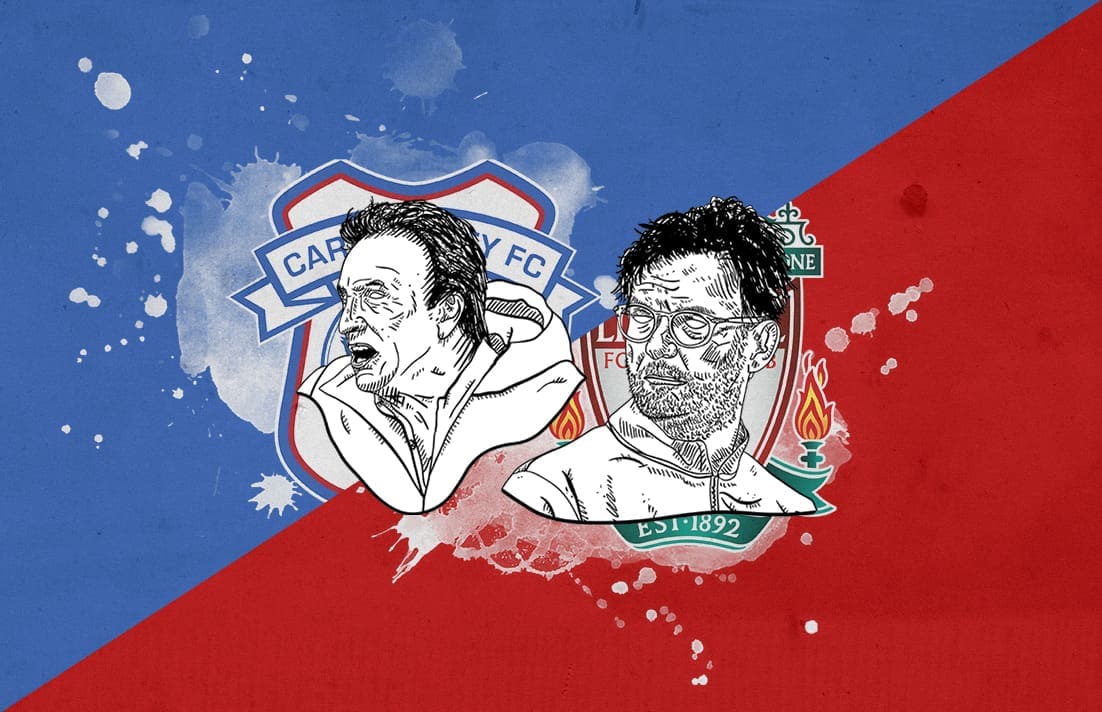


Comments